#Biscuit Neun
Text


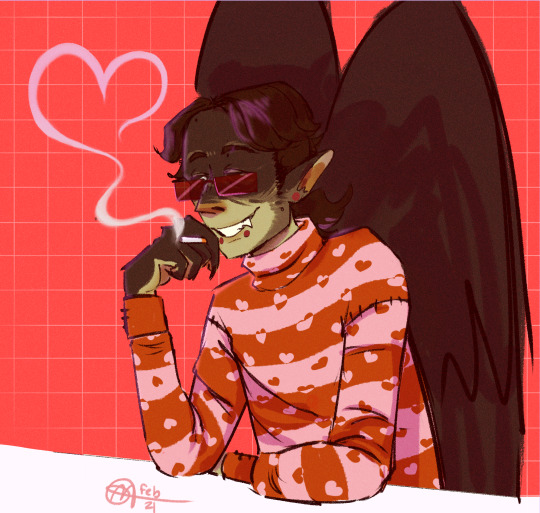



All the prompts from the Psychonauts fanatics Valentine event!
All prompts so far
"crush" First three with Sasha
"self love" Robin eating a fruit tart, watching their favorite show
"sharing" Ruth and Ollie 'sharing' some oranges
"family" Henrik helping biscuit brush her hair
This has been so much fun :]]]
#psychonauts#silly art gallery#sasha nein#silly ocs#psychonauts 2#robin stenzke#psychonauts oc#wingz au#fanart#Ruth Lamia#Henrik Pawns#Biscuit neun#Ollie Lamia#sasha electric au#salamander valley 🦎#Valentines#valentines event#drawing prompt
31 notes
·
View notes
Photo

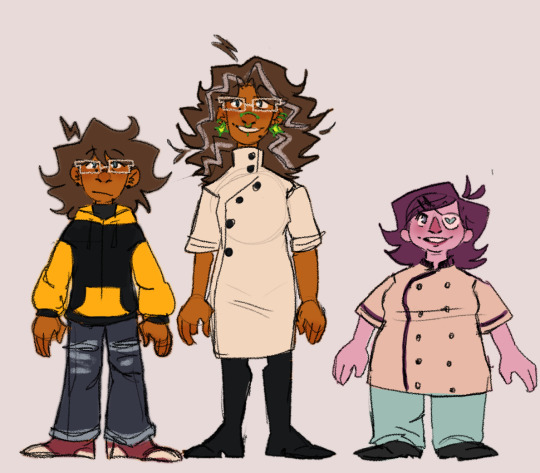


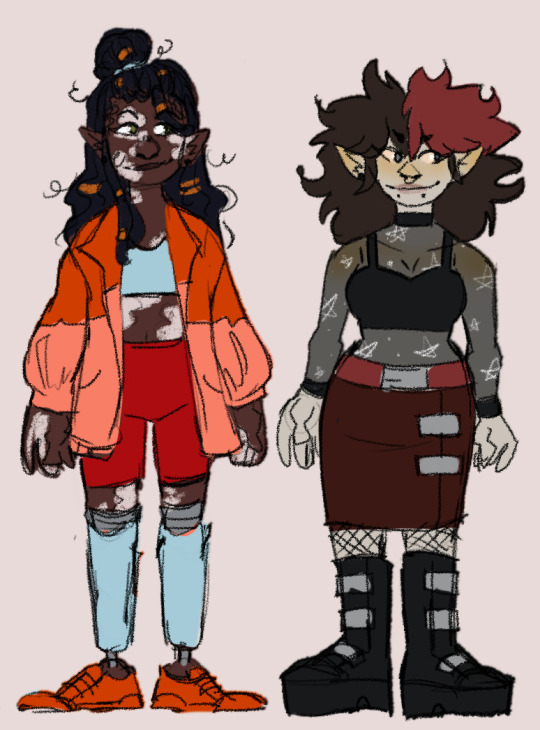
I FINALLY DREW A LINE UP OF ALL MY PSYCHONAUT OCS!!! WOOO
names, left to right!
Robin(teen), Robin (Adult) Marcy, Biscuit, Porter, Brenda, Lawrence, Henrik, Dollie, Jenny, and Ruth!
More info here!
Feel free to ask questions!
#Oc#psychonauts original character#psychosona#original character#psychonauts 2#psychonauts#psychonauts ocs#Robin Stenzkie#Marcy Pastio#Biscuit Neun#Porter Paparazzo#Henrik Pawns#Brenda Stenzki#Lawrence Stenzki#Dollie
22 notes
·
View notes
Text

Bierweltmeisterschaft 2023
Deutsche Brauereien Sieger beim Pils und Weizen
Bierweltmeisterschaft 2023 prämiert deutsche Biere
Große Freude in Oberfranken: Die in Weiher bei Bamberg ansässige Brauerei Kundmüller gewinnt mit ihrem Pils den Weltmeistertitel.
Nach 16 Landes-Auszeichnungen beim „World Beer Award 2023“ kürte eine Jury das Weiherer Pils im August beim Finale in London als weltbestes Pils.
Damit folgt Weiherer auf Hirsch, denn die gleichnamige Brauerei aus Wurmlingen (Baden-Württemberg) gewann mit ihrem Bier nach Pilsner Brauart in den Jahren 2022 und 2021 den begehrten Titel.
Bierweltmeisterschaft 2023 begeistert Geschäftsführer und Team
Braumeister und Geschäftsführer Roland Kundmüller zeigte sich begeistert:
„Der nationale Sieg in der Kategorie ´Bestes deutsches Pils´ war – auch aufgrund der Vielzahl der Bewerber – schon unglaublich. Der Weltmeistertitel jedoch, das ist eine Sensation.“
Sein Bruder Oswald widmete den Erfolg dem Team der Brauerei:
„Unser Pils als das Beste der Welt! Dafür hat unser Team über Jahre hart gearbeitet. Wir sind einfach überglücklich.“
Weitere deutsche Brauereien gewinnen Goldmedaille in London
Ganz ohne Auszeichnung blieb auch die Hirsch Brauerei nicht bei der diesjährigen Bierweltmeisterschaft.
Die Sorte Hirsch Helles zeichnete die Jury als bestes Helles der Welt aus.
Erneuten Grund zum Jubeln gab es auch für die Weldebräu Braumanufaktur aus Plankstadt in Nordbaden.
Mit ihrer Sorte Kurpfalzbräu Ur-Weizen staubte sie die Goldmedaille ab in der Oberkategorie Weltbestes Weizen.
Internationale Jury verkostet die Bierproben blind
In insgesamt neun Unterkategorien heimsten Brauereien aus Deutschland weitere Goldmedaillen ein, darunter exotische wie das weltbeste Porter.
Damit prämierten die Preisrichter dieses Jahr das Biscuit Porter der Rügener Insel-Brauerei.
Die Bierweltmeistertitel werden seit 2007 jährlich in London verliehen und inzwischen messen sich 3300 Biere aus 55 Ländern miteinander.
Eine internationale Jury von Bierkennern bestimmt dabei in Blindverkostung, d. h. ohne Kenntnis des Herstellers, nach festen Kriterien in zehn Hauptkategorien und über 50 Unterkategorien die international besten Biere.
0 notes
Text

Tausendzweihundertneunundsiebzigstes Bier:
Philomenn - Brasserie Artisanale Touken
Spoum
9,0% vol.
Minihy-Treguier, Frankreich
Das Tripel fließt trüb kupferfarben ins Glas, in der Nase Biscuit, Kekse und Spekulatius, dazu Karamell und Trockenfrüchte. Am Gaumen geht es mit voluminösem Malzkörper und winterlichen Gewürzen weiter. Die neun Volumenprozent schmeckt man leicht heraus, binden sich aber gut und wärmend ein. Der Nachtrunk ist mild herb und würzig. Passendes Bier für das momentane Winterwetter.
7/10
4 notes
·
View notes
Text
Weitere Künstler für das Primavera Sound 2021

Das spanische Primavera Sound hat erneut Künstlerinnen und Künstler zu seinem Line Up hinzugefügt. Im nächsten Jahr könnt ihr vom 02. bis 06. Juni 2021 im Parc del Fòrum in Barcelona am Primavera Sound teilnehmen.
Neben den neuen Bestätigungen unter denen man Namen findet wie Khruangbin, The Murder Capital und slowthai wurde die Tagesaufteilung des Festivals bekannt gegeben.
Seit dem 11. Juni 2020 könnt ihr neun auch Tagestickets für das Primavera Sound erwerben. Die Freude auf die größte und 20. Ausgabe des #bestfestivalforever steigt also stetig an.
Neu Bestätigt für das Primavera Sound 2021:
Khruangbin
slowthai
Él Mató a un Policía Motorizado
Evian Christ
Marina Herlop
The Murder Capital
Terrence Dixon
Arthur Verocai
Les Amazones d'Afrique
Kurt Vile
Rolling Blackouts Coastal Fever
Las Ligas Menores
Die Katapult
Hickeys
Biscuit
Za! & La TransMegaCobla
Blond: ish
Chaos in the CBD
Joyhauser
Anika Kunst
Héctor Oaks
William Djoko
Aurora Halal
Call Super
Shanti Celeste
Blawan
Buttechno
D. Tiffany
Lory D
Martha
Jane Fitz
Tickets für das Primavera Sound 2021

Primavera Sound 2021 Tagesaufteilung © Primavera Sound
So war es beim Primavera Sound 2019:
Mehr zum Primavera Sound
Read the full article
#100gecs#AEAEAEA#Agoraphobia#AkashaKid#Amaia#AmelieLens#AnikaKunst#ArthurVerocai#AuroraHalal#Autechre#BadBunny#BadGyal#Bauhaus#Beabadoobee#Beck#Bicep#BigFreedia#BigKlit#BikiniKill#Biscuit#BlackCoffee#BlackLips#blackmidi#Blawan#Blond:ish#Brockhampton#Buttechno#C.Tangana#CallSuper#Caribou
0 notes
Photo

From Berlin with Love
Feel free to take your time, but make sure you stamp your ticket or beware the ticket collector’s unsympathetic wrath, representing just one side of the many sided Berlin. Berlin has a special, peculiar, and particular history, and although it’s described by countless guides as the design city of today, it’s always been a design conscious city. In the early 20th Century, it was the first place in Europe to slice ornaments from building facades in a committed embrace of streamlined modernism.
Much has changed across the city’s façade since, but underground on the U-bahn you can clearly observe the blended traces of Berlin’s design history: some stations are Art Nouveau and German Jugenstil in style, others Bauhaus, 70s futurism, or contemporary, pastel-colored minimalism. It’s been nearly 30 years since the fall of the wall and above ground any signs are mostly gone, but the Cold War era’s clash of opposites remains on the U-Bahn: austere Soviet designs adorn former Eastern stations, and elaborate floral motifs carved in stone are preserved in the former Western ones. The only period not present along the platforms is the Nazi era, when stations were used for bomb shelters. Then again, as you pass through the morose platform of Mohrenstraße, you might feel a little chill learning that the red marble encasing the platform is recycled from Hitler’s former Reich Chancellor Building.
Finding your way—way finding—in this design conscious city, with its design conscious subway, is no simple task, but the U-bahn’s network system, organized by the renowned German typographer Erik Spiekermann and his agency MetaDesgin since 1992, attempts to ease your way and get you to where you want to go. It’s a riot of colors, and a brew of squares, circles and pictograms: This noisy system inherits the chaos of 19 different S-Bahn and U-bahn lines. Berlin is not so much a city formed around a central core but a constellation of separate planets each with its own peculiar forms of life, abstractly linked together by the network of subway tracks.
Because it’s Spiekermann that first guides us through Berlin’s underground, our first stop will be Bhf Bülowstrasse, to take a stroll up Potsdamer Strasse to Spiekermann’s p98a gallery and letterpress workshop. The street was once the locus for the edgy ambiguities of 1920s Weimar cabaret culture and Marlene Dietrich androgyny; today, it houses galleries, non-descript office blocks, and one euro bargain stores, as well as a conspicuously slick Acne shop, and the workplaces of local design studios like the modern, sophisticated HelloMe and the riotous, ramshackle illustration duo 44Flavours. World’s apart in style, but neighbors here in Berlin, which loves to mix things up.
Spiekermann’s p98a is the area’s most popular destination for visiting designers, and plenty of agencies book master-classes in letterpress with this master designer. Glimpse through the window, and you might spy Spiekermann himself high fiving and punching the air with his fist: his old school “no-bullshit” attitude makes him the champion of many, and an irritation—the dad rock of design—to others.
A short walk away from this letterpress haven—or at U-Bahn station Nollendorfplatz—is the great Bauhaus Archive, perched above the canal like an impassive white wave rising from the water. Erected in the 70s, the museum’s architecture draws is loosely inspired by an archive conceived by Bauhaus founder and architect Walter Gropius in the 1960s. Inside, a study in patience and precision, hushed art historians and design researchers sit bent over books, and the permanent collection displays iconic relics from Germany’s early modern years: great weaves by textile artist Anni Albers, paintings by Paul Klee, steel armchairs by Marcel Breuer, and other objects of design from the 20s and 30s produced by the famed and influential Bauhaus school.
The Bauhaus Archive. Image by BBB3viz.
Close by, on the other side of the sprawling Tiergarten Park with its dense cluster of pine trees, sits Berlin’s Hansaviertel. If German’s cool modernism emerged from the Bauhaus in the 20s, then this neighborhood was one of modernism’s climaxes: the housing development was built after World War II in a derelict area, constructed as part of the International Building Exhibition of 1957. Along the leafy, quiet streets are batteries of tower blocks, ribbon buildings, two modernist churches, and a glass library, designed by the period’s most significant architects.
After a morning at Spiekermann’s p98a, it makes sense to visit the Hansalviertel not only to see this plastic clad “city of tomorrow” but to seek out the Buchstabenmusum (called the “Alphabet Museum” in English) situated quietly under the tracks of the over-ground station Bellevue. The first museum in the world to preserve and display letters from public spaces and provide information about their origin and construction, the Alphabet Museum was founded 11 years ago by graphic designer Barbara Dechant, who began collecting after she first rescued from a dumpster a car radio sign reading “A U T O R A D I O”. Hundreds of letters destined for scrap heaps have been salvaged and preserved in a dusty storage unit; there’s neon, metal, and wooden characters in a variety of styles and colors— amidst the letters and dirt, you can construct a story of Berlin and sense a few ghosts.
Back on the U-Bahn, following the many symbols devised by Spiekermann, head to the station Kottbusser Tor, in the Kreuzberg district, for lunch. This bucolic, graffitied neighborhood teems with bars, co-working hubs, dentists, falafel shops, gambling houses, fruit markets, ice cream shacks, as well as concept stores like the stylish fashion destination VooStore, and the chaotic zine shop Motto books, but walking along the area’s wide pavements, you can easily ignore how packed together everything is. There is a kind of discreet harmony to it all, as though it was always meant to be this way; Berlin as energy, and disguise.
The Kottbusser Tor transit stop and the market hall. Photos by Ina Niehoff.
From here, head towards Markethalle Neun, a market place or “culinary epicentre” situated under a large, broken roof and crammed with international food vendors advertising their fair on home-made posters and handsomely scribed blackboards. Today’s signs framing another Berlin: Cheese platters & Olives. Veggie Wurst. Craft beer. Kimchi Burgers. Ginger Lemonade. Freshly Baked Ciabatta.
This is a lunch spot for co-workers busying themselves behind the glass windows of storefronts, or trickling out from former factory buildings that have been converted into spacious offices. Spot a group of women who whimsically but provocatively call themselves “Parallel Universe” sat together in the market hall drinking ginger lemonade on a wooden picnic bench: this group of six female illustrators have gathered to swap advice on art directors—who pays on time, who is best to work with—and to collaborate on illustrations for an upcoming Antifa march. Since 2012, Cynthia Kittler, Kiikka Laakso, Kati Szilágyi, Laura Breiling, Ji Hyun Yu, and Barbara Ott have banded together to form this important all-female collective, using their social media platforms to promote and highlight one another’s output. Better together, stronger side by side. Another Berlin in motion, up-to-date, but part of its historic momentum.
Nearby, after sipping organic lemonade and planning with Parallel Universe, the Museum of Things. A small curiosity tucked above an art bookstore on Orienenstrasse, this collection of glass cabinets features simple, everyday but also marvelous things from the past and near present: every blue Nivea jar since the company first began, biscuit tins, plastic at the back of the museum as if it were no big deal at all—an original Frankfurter Kitchen, a milestone in domestic architecture that’s considered the forerunner of the modern fitted kitchen. All of this finds its home in Berlin, where the elsewhere, the other, the uncanny and the new, whether practical or impractical, always belongs.
The Museum of Things will inspire you make your own things, and luckily, there’s a place close by to help you. Towering above a roundabout near the U-Bahn station Moritzplatz sits the great Modular—the ultimate art supply store, artistically stacked with pens, markers, pexiglass, plywood, stationary, pompoms, and anything else that you’ll ever need to make any thing you’ve ever wanted to make, even objects from your dreams. The German designer and illustrator Sarah Illenberger is in Modular today, intently collecting bright colored supplies that she’ll use for her next still-life cover commission for ZEITmagazin. She and her intern pick up yellow paint and blue and pink cardboard, before heading outside to the community garden on the other side of the road, where they cut great leafs from bushes. Illenberger will paint these with geometric patterns and then photograph them against the bright card later today. Yes, signs of another Berlin.
Wherever you’re staying in Berlin—the boutique design hotel 25hours Bikini Berlin near Tierpark, a colorful and energetic hostel near Schlesische Tor U-bahn, or a relatively cheap Airbnb in the Neukölln district with tall windows, wooden floors and a sunny balcony—on your walks to and from the U-Bahn, you’ll notice the posters. Berlin is a city where posters really mean something to a neighbourhood: where people stop in the street to carefully write down the information on prints as if they were hung on a community billboard. Posters communicate what’s happening around the corner, maybe a new club night, an exhibition, or a vegan burger pop-up event. Posters wrap around street lamps layered over all old ones, becoming dense, ghostly rolls that echo event’s and fashion’s long lost—in winter, these rolls get heavy and wet, sliding down towards the pavement like pulp, only to get propped up again by kids on bicycles in the summer, who use glue trays slung over their shoulders and large brooms to slap up each month’s new run of prints. In 1855, the city began erecting rounded advertising columns on the street corners to house the continuous flux of new poster designs. If the U-bahn is Berlin’s design history, then these advertising columns—although built long ago—are home to the design of today. New Berlin constantly appears through its posters.
The Berlin poster is naturally an especially beloved medium for the city’s designers— it’s not simply a mundane advert that people indifferently stroll past but a vital activating communication tool necessary for navigating nightlife, the gallery scene, and local events. It’s why Berlin clubs, generating the city’s dancing heartbeat, invest so much in their creation: the fabled Berghain, which legend claims is the world’s best techno club with its weekly congregation of black clad regulars wearing BDSM studded collars and Adidas caps, plays careful attention to the design of its monthly fliers and listings. Each month’s new posters feature a dark and atmospheric slice of original artwork, articulating and amplifying the club’s mythical night-life pull. A call to action for the great Berlin night, where the city begins and ends.
Visiting Mitte, the central borough in Berlin. Photo by Ina Niehoff.
The walk back to the U-bahn, to start again after one of those nights, you’ll pass an advertising column featuring a particularly neat, eye-catching placard—the poised influence of Swiss design is unmistakable, and its gorgeous serif typography is paired with an elusive background image, hinting at yet another Berlin yet to come. It’s the work of graphic design studio NODE, based in Berlin and Oslo, Norway, an intellectual and meticulous studio whose considered and theoretical output is a hallmark of Berlin’s contemporary art world. On this modern poster, large letters read “HKW,” standing for the Haus der Kulturen der Welt, a conference hall and exhibition space that hosts art, culture, and design events. Depending on what month it is, perhaps the yearly Typo Berlin conference is taking place, or Transmediale, a cerebral technology and art festival. Berlin, where conferences never end.
HKW was constructed as part of the International Building Exhibition of 1957 project and resembles a bright orange oyster rising form the ground. An event titled Miss Read is typical of events held there; a busy art book and self-publishing fair that draws in book lovers from around the country. German publishers and independent magazine makers sit behind their make-shift stalls, showcasing intricately bound tomes, sleek poetry chapbooks, colorful manifestos, risograph comics, monographs with knitted covers, experimental type specimens, and endless other papery surprises. Berlin is made of paper as much as memory, metal, and concrete.
The magazines available at this crowded, popular event are similar to those you can purchase in a store in the Mitte district of the city, close to the Weinmeister U-bahn station, called Do You Read Me?! It’s niche assortment of magazines sit on minimal black shelving. There are magazines here for every mood and every taste: one for redheads, another for dog lovers, another for female soccer players, another that tells the history of a different street each issue, and also more enigmatic, challenging, consistently well-designed choices. Mitte is a tidy district, a place of cafes that serve impressive slabs of classic avocado toast and that’s home to ambitious start ups which dot the streets under the shadow of the TV tower’s vigilant orb. If there is a center to proudly centerless Berlin, then perhaps it’s Mitte, which literally means “center” and is, at least in the prosaic geographical sense, in the middle of the city. The tall office of Freunde von Freunden perches snuggly in one of the area’s clean streets; the ultimate go-to blog for motivated lifestyle dreamers, Freunde von Freunden records the energetic lives of Berlin’s creative scene with breezy, sophisticated photography. Berlin: always aware of itself, without giving too much away.
A swan chillaxing in Berlin. Photo by Ina Niehoff.
It’s while traversing the neat, methodical streets of Mitte (passing by the KW Institute of Contemporary Art, a four-story gallery with beautifully designed exhibition catalogues, and Viktor Leske, an avant-garde hair dressing salon where few leave without an undercut) that you stumble across the neat, methodical studio of international star illustrator Christoph Niemann. He works with his spectacles perched on his nose in his white and silver office behind a storefront’s glass window—a literal spectacle for passers-by; children press their faces up to the glass to watch him sketch. It’s so immaculately clean in his studio, a kind of comment on Berlin’s dirt, and he’s penning away on Post-It notes bought at Modular, devising a plan for his next New Yorker cover. From Berlin with love; design for the rest of the world.
After standing and watching, enthralled by process, by the materializing of yet more Berlin, you might then spot another poster, another message, and be directed somewhere else, somewhere new, the Berlin still being made, still being invented. Or you might dive back down into the U-bhan, taking refuge in the depths of history. Moving on, without rushing, because Berlin time takes its time, to another brunch, to a beer on the canal, to something crazy underground or enterprising on the streets—moving slowly, not quickly, surrounded by designs and designers, form and content, interpreting the language and style of Berlin, a city always becoming itself, where something new always seems to be starting.
2 notes
·
View notes
Text
Bunch of drawings from a daycare/age swap au! (Basically just me babyifying OCS)
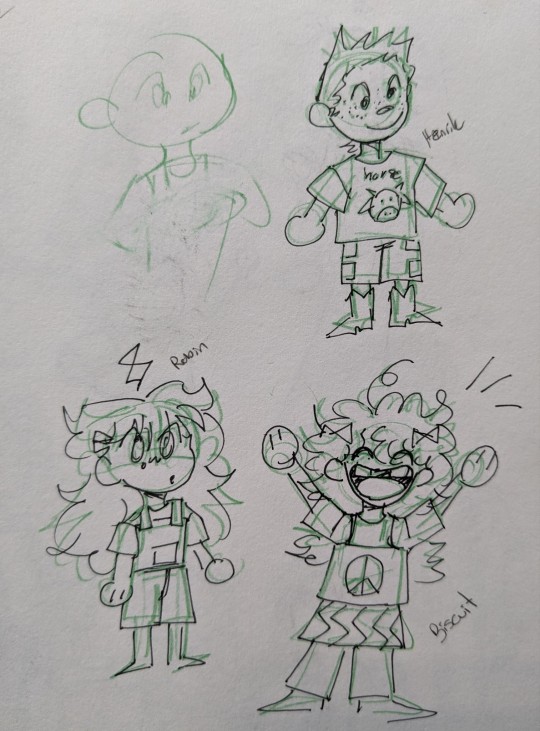

Robin, Henrik, biscuit, stitches (all my ocs)
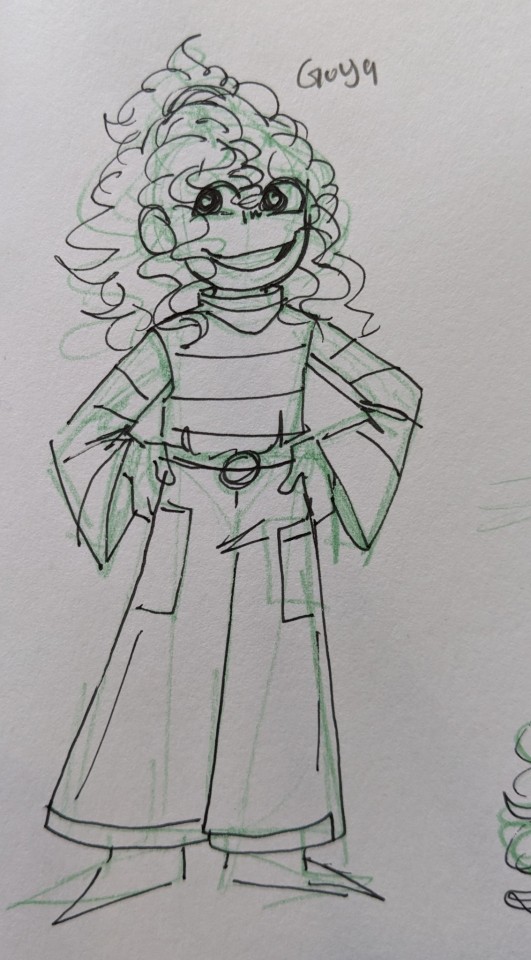
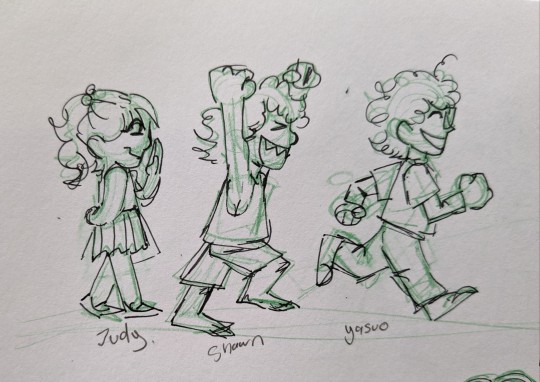
Goya, Judy, Shawn, Yasuō ( @owoiwonderwhatsthis )

Cain and Able ( @annabiscuits )
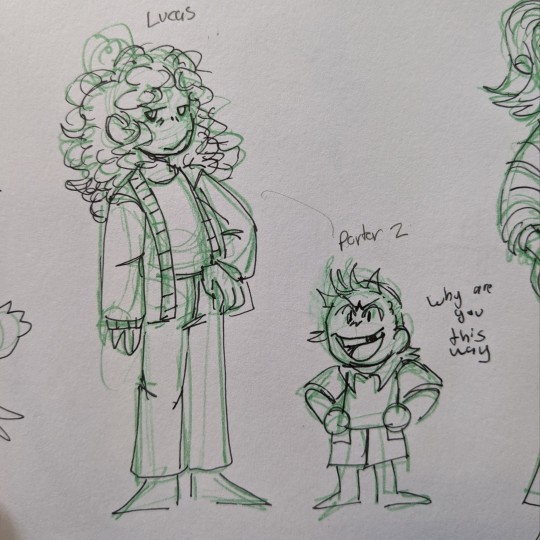
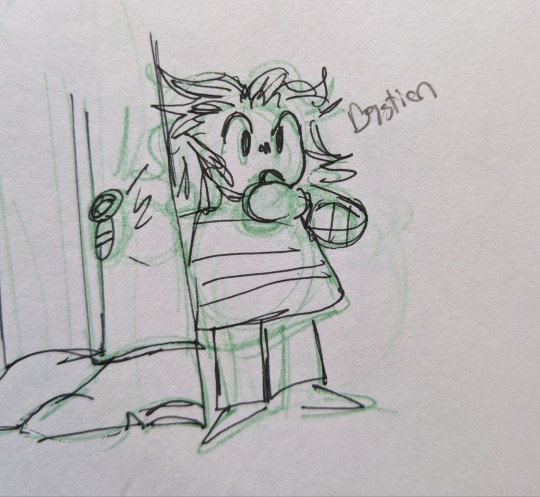
Lucas and Bastion ( @meepmoopmaap ) (and Porter, my oc)
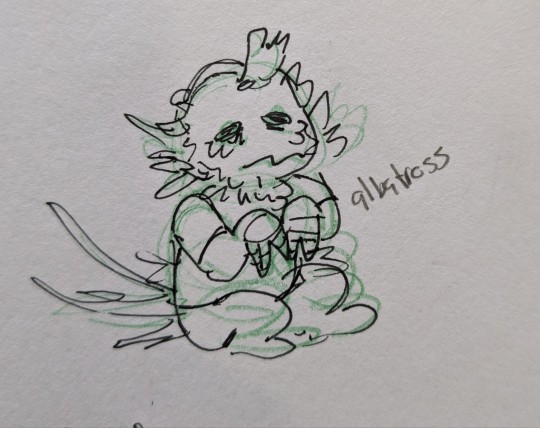

Albatross, Gwen, Ruth ( @supermew100 )
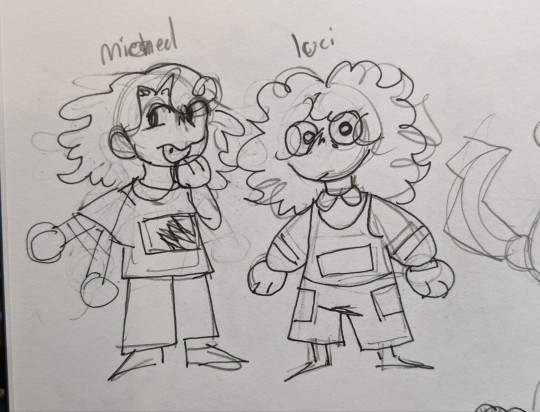
Micheal and Luci ->
#psychonauts#psychonauts au#daycare au#silly art gallery#others ocs#sketches#robin stenzke#henrik pawns#biscuit neun#stitches Lamia
14 notes
·
View notes
Text

all my ocs and their flags! (At least the queer and identity ones!)
#silly ocs#silly art gallery#robin stenzke#sasha nein#psychonauts oc#pride month#lgbtqia#lesbian#gay#trans#ace#aro#demiromantic#pansexual#gender nonconforming#demigirl#genderfluid#Clover#Henrik pawns#Biscuit Neun#porter r paparazzo#Dollie G#Brenda Stenzke#Lawrence Stenzke#Jenny Hammer#Jack Hammer#Ruth Lamia#Ollie Lamia#sasha neumann#Lavender
8 notes
·
View notes
Text



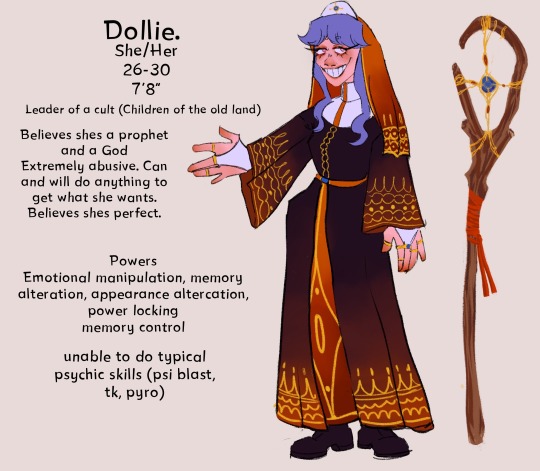
Most up to date refs!! The next ones are all out dated and need updates



#psychonauts oc#silly ocs#oc refs#Henrik pawns#biscuit Neun#Dollie#dollie g#porter r paparazzi#porter paparazzi#Ruth Lamia#brenda Stenzke#Lawrence Stenzke#ocs master#my art#silly oc#silly art gallery#psychonauts 2#psychonauts#oc reference
13 notes
·
View notes
Text





Oof I forgot this in drafts
Me being really really normal (<- lying) about
Kemonomimi Au of my OCS (MOSTLY Robin)
#psychonauts#silly art gallery#robin stenzke#silly ocs#psychonauts oc#kemonimimi#neko#nekomimi#neko au#henrik pawns#biscuit Neun
6 notes
·
View notes
Text
I used this an two random generations to wander a bunch of questions for my OCS!
Everything will be under the cut to avoid a MASSIVE text post
(biscuit, 22)
Hrm jealousy is weird bc if it doesn't happen often. More often it's Envy.
She really keeps to herself about it,. Doing her best to try and hide it 'fix' it
If it's bad enough it'll come out as passive aggressive jabs
(BnL, 41)
Brenda LOVES young kids and babies. She thinks they're SOOO cute and loves to dress them up. But she sees them way more as dolls than actual living, breathing humans.
Lawrence however. He wants nothing to do with them. They're gross, annoying, dirty, and stupid. All they do is cry and eat all of his food. You couldn't pay him all the money in the world to change a diaper.
He automatically assumes all children are stupid animals
(jack, 11)
Hrrmr. I think he tends to avoid things that confuse him? Or at least try to understand surface level and whatever he can't, but when it reaches a point of being stressful he'll ignore it
(biscuit, 28)
She'll take the worst truth over the smallest lie. A lie always hurts more
(Calypso, 7)
The smell of the ocean and sounds! They love everything about the sea
(biscuit, 28)
She'll take the worst truth over the smallest lie. A lie always hurts more
(Robin, 20)
Hrm. The concept of love is confusing to them, hard to explain. They can feel the difference between how they love someone. Obviously they love Anjea differently from how they'd love Sasha or DD as family. But it's impossible for them to put those exact feelings into words
(Henrik, 41)
He loves em! He sees that kids are our future and if you don't show them kindness and patience then how can they know how to give it. They deserve the world and need to be protected
(Robin, 15)
They rehearse EVERYTHING they say several times over. They're so paranoid about saying something stupid or that will get them into trouble. More often than not they overthink what they had to say so much they just choose not to speak instead. It's safer that way
(calypso, 3)
They have a long ass process to get themselves to bed. Skin care, hair care, making the bed, PJs, ocean noises, sleeping mask, a billion pillows to support their body in every which way. Humidifier.
If one thing isn't right they CANT sleep
(porter, 21)
Bitch ass just rolls out of bed, puts on clothes that are more often than not already worn and on the floor from the day before. Slap hair gel into his hair and that's it.
(Robin, 5)
It's hard to say. They already have mega trust issues, but they'll stick around someone that hurts them bc they feel they deserve it in a way?
The fastest way to loose robins trust is hurting someone they care about. You can walk all over them but the second you start shit with someone they care about, it's over
#silly ocs#psychonauts oc#Henrik Pawns#robin stenzke#robin nein#Biscuit Neun#Brenda Stenzke#Lawrence Stenzke#Porter R. Paparazzo#Jack Hammer#Calypso#i need to make a master post of my ocs still#txt post#txt#oc questions
1 note
·
View note